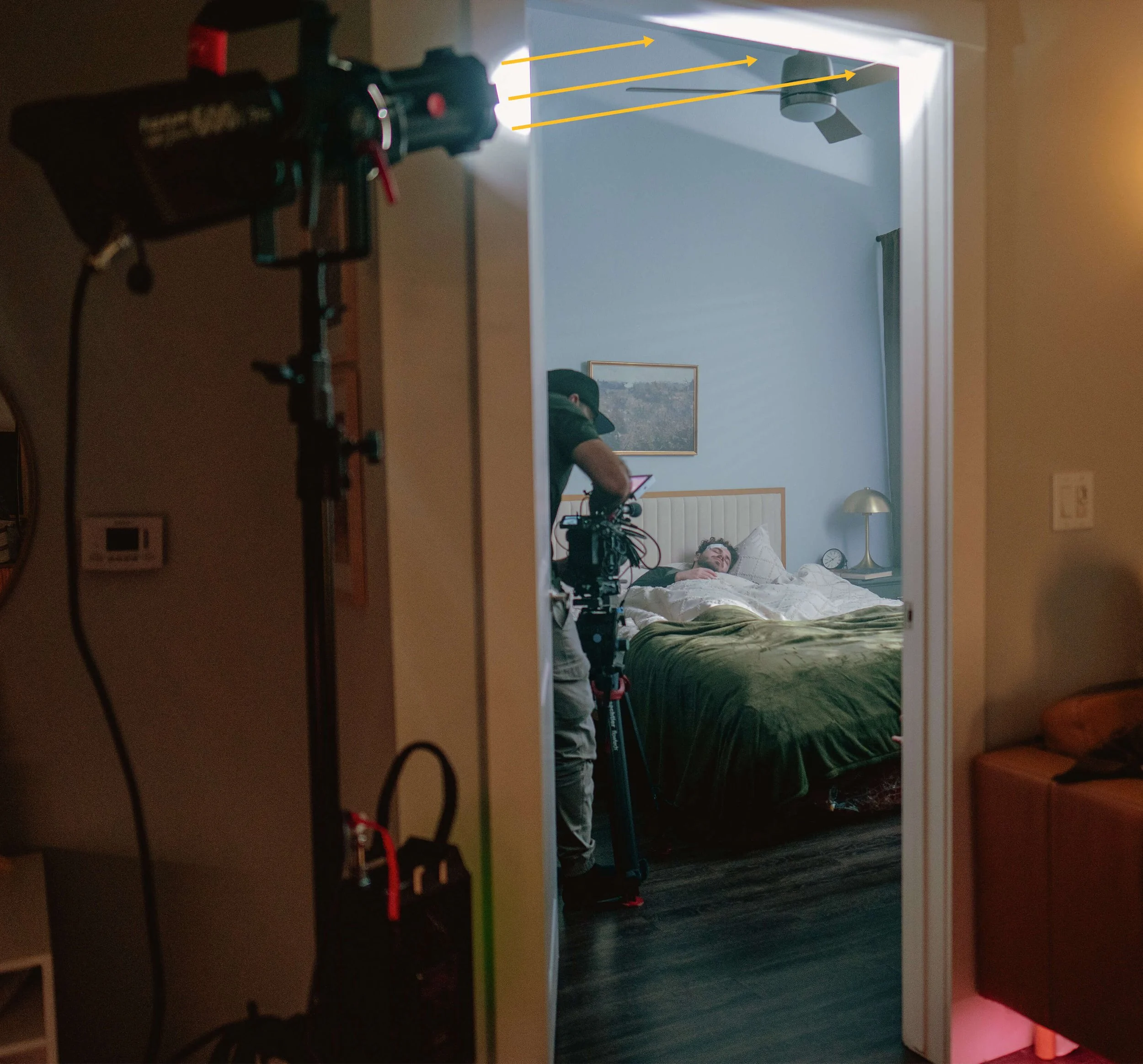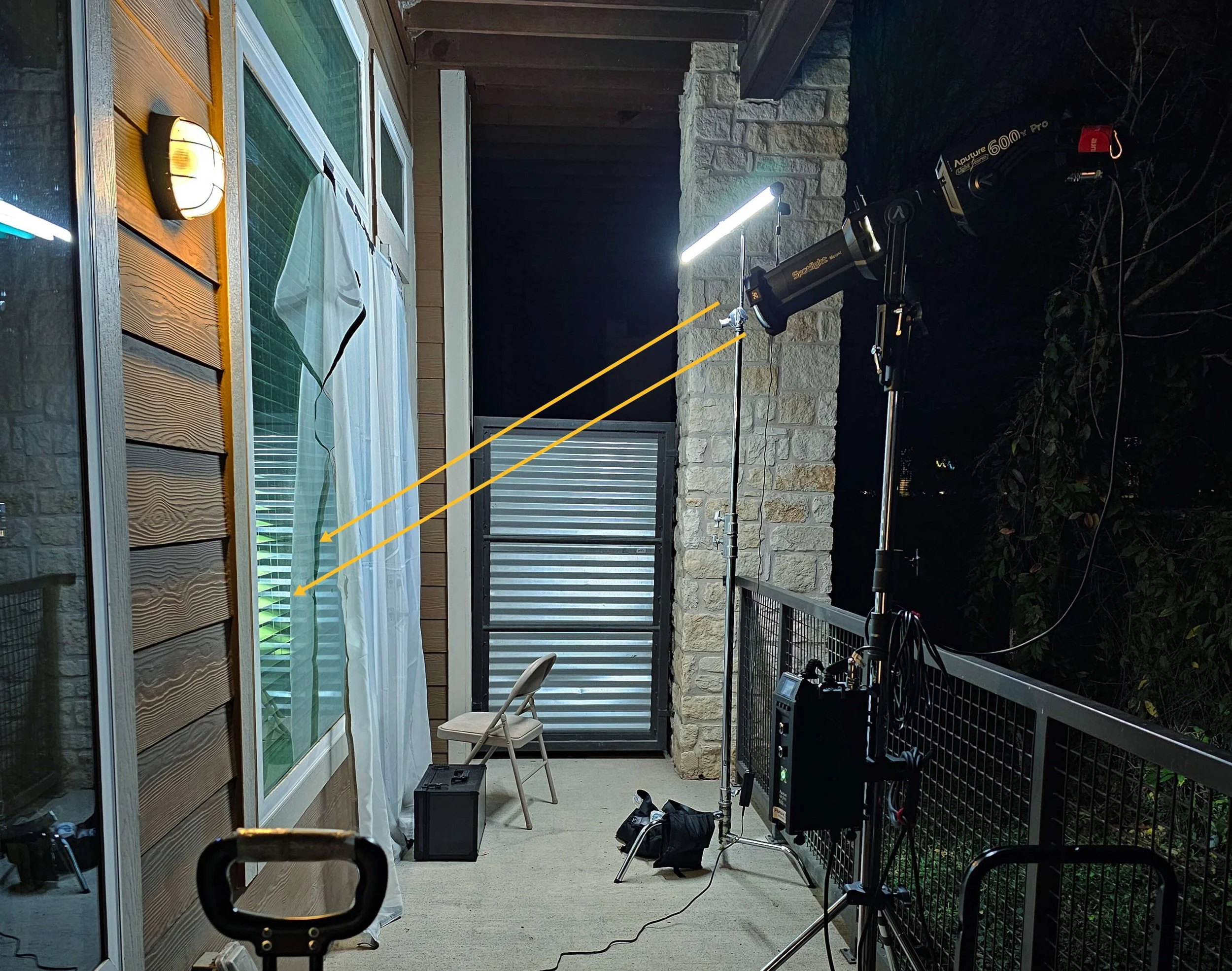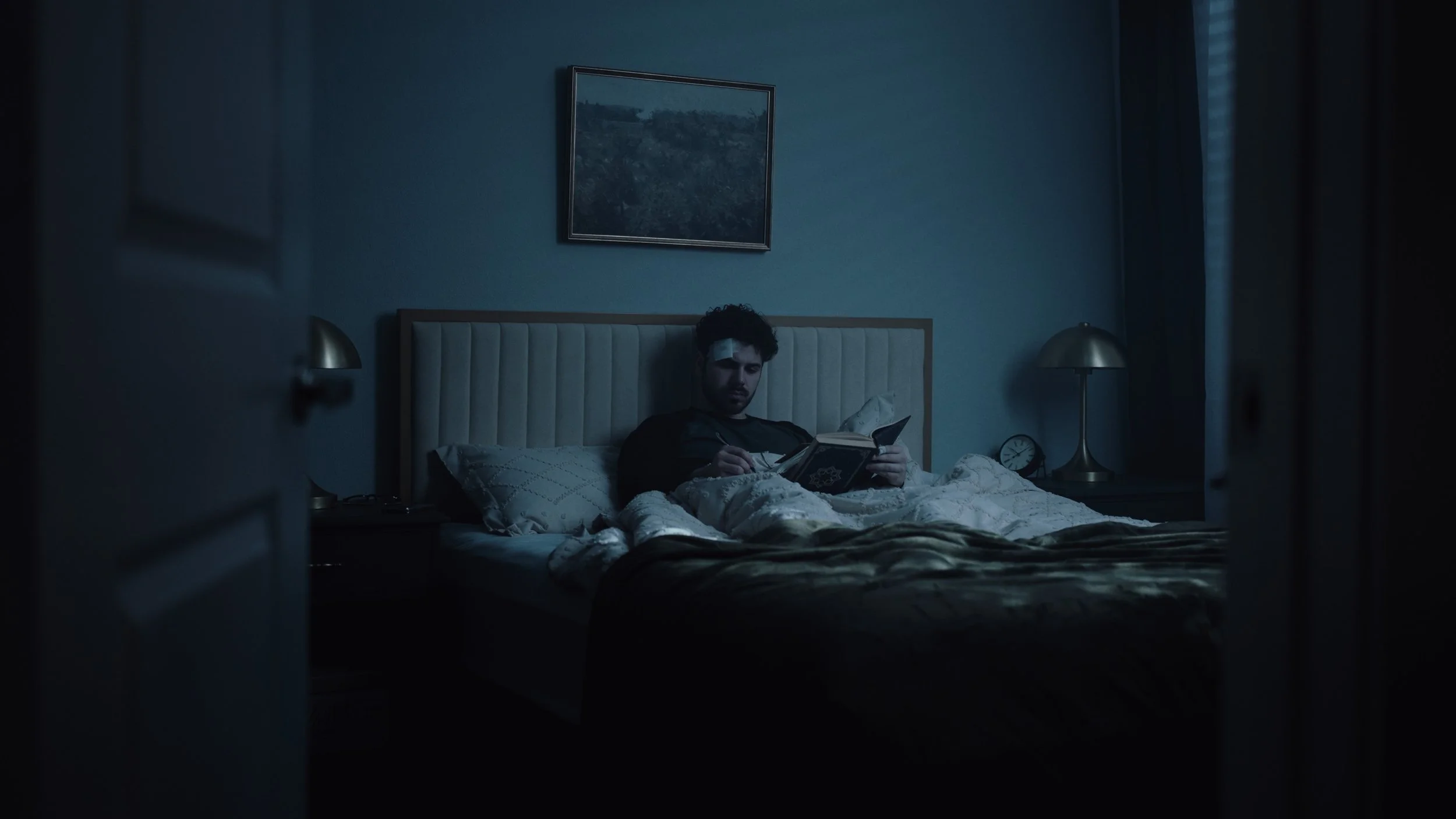Narrative Cinematography: Lighting Night Interiors
Narrative Cinematography: Lighting Night Interiors
Night interiors are a true test of a cinematographer's ability to control light. You want the viewer to see what's going on while maintaining the ~feeling~ of darkness.
My name is Ahmad and I’m a Director of Photography in Washington D.C. - working on documentaries, commercials, and narrative films. In this short break down, we'll discuss a night interior scene in the ways of color, lighting theory, and setup.
Color
There are several ways to stylize night in film. For example, the moon isn't actually blue - it's just been widely accepted as such in movies. There are films that portray night as white or even with a slight yellow tint (believe it or not, this is the true color of the moon).
The best way to stylize night in your project is the way that reinforces your story. We decided to go with a cool blue here to express emotions of solitude as the character deals with the loss of his brother.
Lighting Theory / Setup
The biggest goal here was to make the viewer believe that the scene was being lit from the window. It's important to motivate your artificial lights from a real light source when you're looking for a naturalistic look. If we outright lit the whole scene with a light through the window, it would spill everywhere and need to be so bright that the scene would read more closely to daytime. Controlled pockets of light is what we were going for, and to do that, we needed to paint with intentional strokes that would all seemingly come from the window.
Window Treatment
The first thing we needed to set up were sheers to catch the light we threw on it. The location didn't have poles installed, and we knew the shot wouldn't be super wide, so we worked with Art Dept to create a temporary solution. This was done by tensioning a pole to the wall with a combo stand (and a few sand bags). Resourceful filmmaking FTW.
We're purely using the window to fill the void of darkness in the background of the shot and to motivate our lighting from, not to actually contribute to the scene. Again, if we lit the sheers up too much it would look like daytime and be closer to white. Darker sheers hold color better. With that in mind, we used a Pavotube at a low intensity to illuminate them.
Ambient
Since the sheers weren't contributing to the scene, we needed a way to push ambient light from that side of the room. I've found that great ambience is controlled, directional, ambience. It lifts the image where you need it to while maintaining shape near the camera. We achieved that by using a 600x + Spotlight that was bouncing off the wall above the window.
The spotlight allows you to create a shape with sharp cuts that can stay off camera while being close to the edge of frame.
Key light
While every other light worked to light the scene as a whole, the key light was there for us to control the level of brightness on our character. We used a grid to keep the beam angle focused while maintaining a soft source. An Intellytech 3FC worked great for this.
Hard Moonlight
While moonlight is generally soft, it can also create hard shadows depending on the cloud coverage that day. Mixing hard and soft light is a great way to avoid muddy shots in dark scenes. Highlights in dark shots can give the viewer a reference point and make the underexposed areas "make sense".
We used a 600x + spotlight + tree gobo skipping on the bed to break up the image and create subtle highlights.
Night interiors are an incredible way to practice and test your ability to localize brightness and contrast. These concepts don't stop there though - I find myself using pieces of them on everyday shoots as well and they're great to keep in your toolbox.
If you like this, consider sharing with a friend! Happy to answer questions about any of this - feel free to shoot me an email at ahmadasaadDP@gmail.com
If you’d like to follow my work, I can be found on Instagram @ahmadasaaddp












